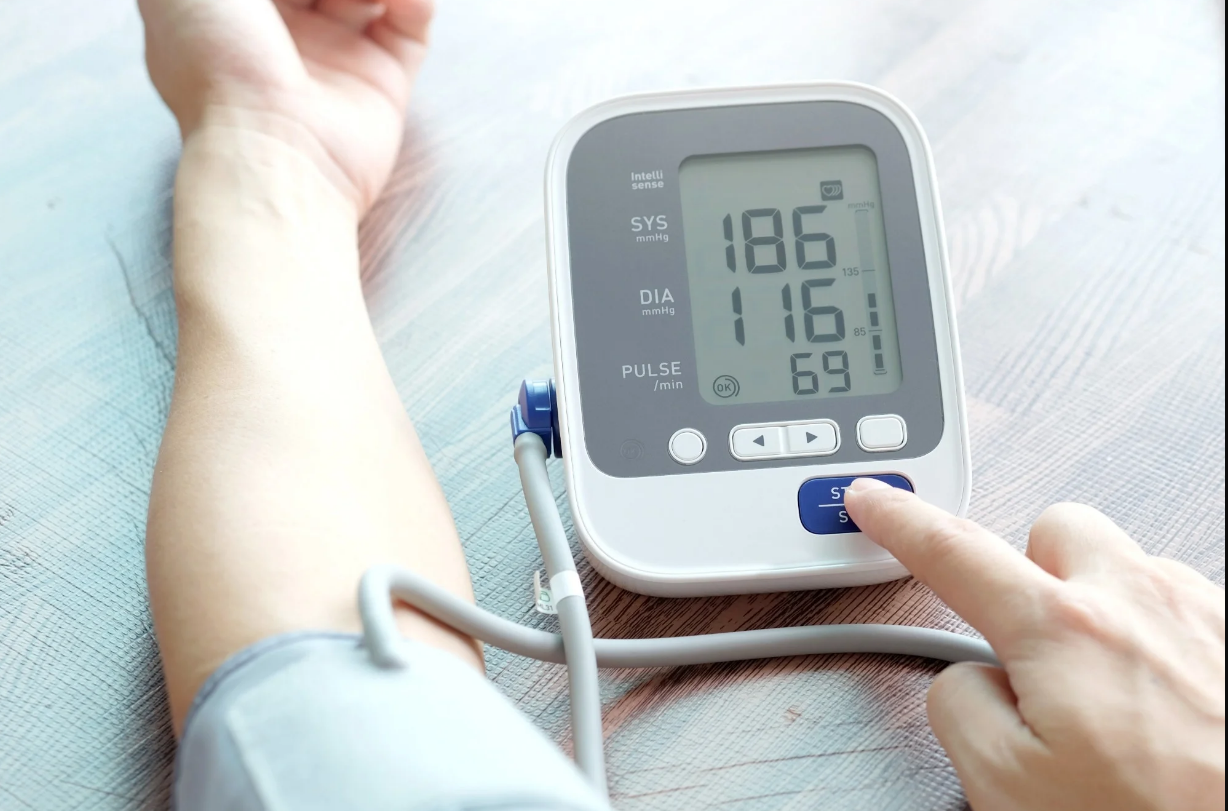1. Overview of Anxiety Disorders
Definition and Nature
Anxiety is a normal reaction to stress, serving as an alert to potential danger. However, anxiety disorders differ from typical anxiety as they involve excessive, persistent fear or worry that disrupts daily life. These disorders often begin in childhood or adolescence and can persist into adulthood. Statistically, more women are affected by anxiety disorders than men. In 2019, anxiety disorders were the most prevalent mental health conditions globally, affecting 301 million people.
Impact on Daily Life
The impact of anxiety disorders on daily life is profound, interfering significantly with job performance, schoolwork, family dynamics, and social interactions. The distress caused by these disorders can be considerable and, if left untreated, may persist for an extended period, affecting the overall quality of life.
2. Types of Anxiety Disorders
Generalized Anxiety Disorder (GAD)
Generalized Anxiety Disorder involves persistent and excessive worry about everyday activities. Individuals with GAD experience symptoms such as restlessness, fatigue, difficulty concentrating, irritability, muscle tension, and sleep problems. These symptoms significantly interfere with daily life and are often constant.
Panic Disorder
Panic Disorder is characterized by recurrent and unexpected panic attacks. During these attacks, individuals may experience a rapid heart rate, sweating, chest pain, shortness of breath, and a fear of losing control. The intense fear of future panic attacks often leads to avoidance behavior, as individuals try to prevent another attack.
Social Anxiety Disorder (Social Phobia)
Social Anxiety Disorder, also known as social phobia, involves an intense fear of being judged or embarrassed in social situations. Common symptoms include blushing, sweating, trembling, a racing heart, stomachaches, and difficulty making eye contact. This fear can significantly impact social interactions and daily functioning.
Phobias
Phobias are characterized by an intense and irrational fear of specific objects or situations. Symptoms include an immediate anxiety response and avoidance behavior. Types of phobias include:
- Specific phobias (e.g., fear of heights, flying, or animals)
- Social phobia (fear of social situations)
- Agoraphobia (fear of situations where escape might be difficult)
- Separation Anxiety Disorder
- Selective Mutism
Agoraphobia
Agoraphobia involves a fear of being in situations where escape might be difficult or help unavailable. Symptoms include avoidance of public transportation, open or enclosed spaces, crowds, and being outside alone. This fear can severely limit an individual’s ability to function in daily life.
Separation Anxiety Disorder
Separation Anxiety Disorder is marked by an excessive fear of being separated from attachment figures. Symptoms include persistent worry about losing loved ones, reluctance to go out, and nightmares about separation. This disorder can affect both children and adults.
Selective Mutism
Selective Mutism is an anxiety disorder where individuals, typically young children, are unable to speak in certain social situations despite having normal speech in others. It is often associated with extreme shyness and social anxiety, significantly impacting social communication and school performance.
Medication-Induced Anxiety Disorder
Medication-Induced Anxiety Disorder occurs when anxiety symptoms are caused by the use of certain medications or withdrawal from them. This type of anxiety disorder is directly linked to the pharmacological effects of drugs.
Unspecified and Other Specified Anxiety Disorders
These categories include anxiety disorders that do not fit into the other specific categories but still cause significant distress and impairment. These disorders may have unique or overlapping symptoms that warrant clinical attention.
3. Symptoms of Anxiety Disorders
Common Symptoms
Individuals with anxiety disorders often experience a range of symptoms that can significantly impact their daily lives. These symptoms include:
- Excessive Fear or Worry: Persistent and overwhelming anxiety about various aspects of life.
- Panic, Fear, Uneasiness: Frequent feelings of intense fear and discomfort.
- Feelings of Doom: A pervasive sense that something terrible is going to happen.
- Sleep Problems, Fatigue: Difficulty falling or staying asleep, leading to chronic tiredness.
- Difficulty Staying Calm: An inability to relax or feel at ease.
- Cold, Sweaty, Numb, or Tingling Hands/Feet: Physical manifestations of anxiety, often in the extremities.
- Shortness of Breath, Hyperventilation: Rapid, shallow breathing that can escalate to hyperventilation.
- Heart Palpitations, Increased Heart Rate: Noticeably rapid or irregular heartbeat.
- Trembling, Dry Mouth: Physical symptoms of anxiety that affect the body’s normal functions.
- Gastrointestinal Issues, Nausea: Stomach problems such as nausea, diarrhea, or irritable bowel syndrome.
- Muscle Tension, Dizziness, Feeling Weak: Physical tension and feelings of faintness or weakness.
- Rumination, Inability to Concentrate: Repeatedly thinking about the same thoughts and difficulty focusing.
- Avoidance of Feared Objects or Places: Actively steering clear of situations or items that trigger anxiety.
These symptoms can vary in intensity and duration, often interfering with an individual’s ability to function normally.
4. Causes of Anxiety Disorders
Genetics
Anxiety disorders can run in families, indicating a potential genetic predisposition to these conditions. This hereditary aspect suggests that individuals with a family history of anxiety disorders are at a higher risk of developing similar issues.
Brain Chemistry
Anxiety disorders are linked to faulty circuits in the brain that control fear and emotions. Imbalances in neurotransmitters, which are chemicals that transmit signals between nerve cells, can contribute to the development of anxiety disorders.
Environmental Stress
Environmental stress plays a significant role in the onset of anxiety disorders. Stressful life events such as childhood abuse, the loss of a loved one, or witnessing violence can trigger anxiety symptoms. These traumatic experiences can have long-lasting effects on an individual’s mental health.
Substance Use
The misuse of alcohol and drugs, as well as withdrawal from these substances, can cause anxiety symptoms. Substance use can initially be a coping mechanism for anxiety, but it often exacerbates the condition in the long run.
Medical Conditions
Certain medical conditions can contribute to anxiety disorders. These include heart, lung, and thyroid conditions, gastrointestinal (GI) disorders, respiratory conditions, and hormone-producing tumors. These physical health issues can manifest symptoms that mimic or worsen anxiety.
Medications
Withdrawal from certain medications can lead to anxiety symptoms. This is particularly true for medications that affect the nervous system, such as anti-anxiety drugs and antidepressants. The body’s adjustment to the absence of these substances can result in heightened anxiety.
5. Risk Factors for Anxiety Disorders
Mental Health Conditions
Having certain mental health conditions, such as depression, can increase the risk of developing anxiety disorders. The interplay between different mental health issues can exacerbate symptoms and complicate treatment.
Childhood Abuse
Experiencing emotional, physical, or sexual abuse during childhood is a significant risk factor for anxiety disorders. These traumatic experiences can have long-lasting impacts on mental health, making individuals more susceptible to anxiety.
Trauma
Experiencing traumatic events, such as accidents, natural disasters, or violent attacks, can trigger anxiety disorders. The psychological impact of trauma can lead to persistent fear and anxiety.
Negative Life Events
Stressful life events, such as the early loss of a parent, can increase the risk of anxiety disorders. These negative experiences can disrupt emotional development and contribute to long-term anxiety.
Severe Illness
Worrying about one’s own severe illness or the health of a loved one can lead to anxiety disorders. The stress associated with managing chronic health conditions can be overwhelming and contribute to anxiety symptoms.
Substance Abuse
The use of alcohol and illegal drugs is a risk factor for anxiety disorders. Substance abuse can alter brain chemistry and exacerbate anxiety, leading to a cycle of dependency and worsening mental health.
Childhood Shyness
Shyness and withdrawal from unfamiliar people and situations during childhood are linked to the development of social anxiety in later life. Early social behaviors can influence the likelihood of experiencing anxiety disorders as an adult.
Low Self-Esteem
Negative self-perceptions and low self-esteem can contribute to anxiety disorders. Individuals who view themselves negatively may be more prone to anxiety, particularly in social situations.
Family History
A family history of anxiety disorders suggests a genetic predisposition to these conditions. Individuals with close relatives who have anxiety disorders are at a higher risk of developing similar issues, indicating the role of genetics in anxiety.
6. Diagnosis of Anxiety Disorders
Diagnostic Process
The diagnosis of anxiety disorders involves a comprehensive process to ensure accurate identification and appropriate treatment.
- Medical Examination: The first step in diagnosing anxiety disorders is a thorough medical examination. This helps to rule out other health conditions that might be causing or contributing to the symptoms of anxiety. Medical conditions such as heart disease, thyroid problems, and respiratory disorders can sometimes present with symptoms similar to anxiety disorders.
- Referral to Specialists: If no physical health issues are found, the next step is often a referral to mental health specialists, such as psychiatrists or psychologists. These professionals are trained to evaluate and diagnose mental health conditions. They use structured interviews and standardized assessment tools to gather information about the patient’s symptoms, medical history, and family history of mental health conditions.
- Screening Recommendations for Children and Adolescents: The United States Preventive Services Task Force recommends screening for anxiety in children and adolescents ages 8-18 years. This is because early identification and intervention can significantly improve outcomes for young individuals with anxiety disorders. Screening involves questionnaires and interviews designed to detect signs of anxiety early on, enabling timely and effective treatment.
7. Treatments for Anxiety Disorders
Medications
- Antidepressants: These include Selective Serotonin Reuptake Inhibitors (SSRIs), Serotonin-Norepinephrine Reuptake Inhibitors (SNRIs), bupropion, tricyclics, and Monoamine Oxidase Inhibitors (MAOIs). They help improve mood and alleviate anxiety symptoms.
- Benzodiazepines: Used for short-term relief of anxiety symptoms, these medications act quickly to reduce severe anxiety but are generally not recommended for long-term use due to the risk of dependence.
- Beta-Blockers: Primarily used to control physical symptoms of anxiety such as rapid heart rate and trembling. They are often prescribed for situational anxiety, such as performance anxiety.
- Anticonvulsants and Antipsychotics: Sometimes used off-label to manage anxiety symptoms, particularly when other treatments are ineffective.
- Buspirone: Specifically prescribed for chronic anxiety, this medication helps reduce anxiety without the sedative effects associated with benzodiazepines.
Therapies
- Psychotherapy: Also known as talk therapy, psychotherapy involves sessions with mental health specialists to explore and address the underlying causes of anxiety. Techniques such as discussing thoughts, feelings, and behaviors are used to manage symptoms.
- Cognitive Behavioral Therapy (CBT): A widely used type of psychotherapy, CBT focuses on identifying and changing negative thought patterns and behaviors. It often includes exposure therapy, which involves facing and overcoming fears in a controlled environment.
- Family CBT: This approach involves family members in therapy sessions to support the individual with anxiety and address any family dynamics that may contribute to the disorder.
Managing Symptoms
- Learn About the Disorder: Understanding anxiety disorders can help individuals feel more in control and better equipped to manage their symptoms.
- Stick to the Treatment Plan: Consistency in following prescribed treatments is crucial for managing anxiety effectively.
- Reduce Caffeine and Alcohol: Limiting these substances can help reduce anxiety symptoms, as they can exacerbate nervousness and interfere with sleep.
- Eat Well, Exercise, Get Good Sleep: Maintaining a healthy lifestyle through balanced nutrition, regular physical activity, and adequate rest supports overall mental health.
- Practice Relaxation Techniques: Techniques such as deep breathing, meditation, and progressive muscle relaxation can help reduce stress and anxiety.
- Keep a Journal: Writing down thoughts and feelings can provide insight into anxiety triggers and patterns, helping to manage symptoms.
- Manage Negative Thoughts: Cognitive restructuring techniques can help replace negative thoughts with more positive, realistic ones.
- Maintain Social Connections: Staying connected with friends and family provides emotional support and can reduce feelings of isolation.
- Seek Support: Joining support groups or talking to others who understand can provide comfort and practical advice for managing anxiety.
8. Self-Care and Prevention
Self-Care Strategies
Effective self-care strategies are essential for managing anxiety disorders and improving overall well-being. These strategies include:
- Avoid Alcohol and Illicit Drugs: Reducing or eliminating the use of alcohol and illicit drugs can help decrease anxiety symptoms and prevent worsening of the condition.
- Exercise Regularly: Engaging in regular physical activity can help reduce stress and anxiety. Exercise releases endorphins, which are natural mood lifters.
- Maintain Healthy Eating and Sleeping Habits: A balanced diet and regular sleep schedule are crucial for mental and physical health. Proper nutrition and adequate rest can help stabilize mood and energy levels.
- Learn Relaxation Techniques and Mindfulness: Techniques such as deep breathing, progressive muscle relaxation, and mindfulness can help manage stress and anxiety. Practicing these techniques regularly can improve resilience to stress.
- Develop a Habit of Mindfulness Meditation: Incorporating mindfulness meditation into daily routines can help individuals stay present and reduce anxiety. This practice involves focusing on the present moment and accepting it without judgment.
Prevention
Preventing anxiety disorders involves proactive approaches that can be implemented at the community and individual levels. Key prevention strategies include:
- Community-Based Approaches: Initiatives that involve the community can help create supportive environments that reduce the risk of anxiety disorders. These approaches can include awareness campaigns and community support programs.
- Parental Education: Educating parents about the signs of anxiety and effective parenting strategies can help prevent the development of anxiety disorders in children. Supportive and understanding parenting can foster resilience in children.
- School Programs: Implementing programs in schools that promote social and emotional learning can help students develop healthy coping mechanisms. These programs can teach children how to manage stress, build self-esteem, and develop positive relationships.
- Exercise Programs: Encouraging regular physical activity through structured exercise programs can help reduce anxiety. Exercise has been shown to improve mood and decrease stress, making it a valuable tool in anxiety prevention.
9. WHO Response
Comprehensive Mental Health Action Plan 2013-2030
The World Health Organization (WHO) has developed a Comprehensive Mental Health Action Plan to address mental health conditions, including anxiety disorders, from 2013 to 2030. This plan outlines strategic objectives and steps for appropriate interventions to improve mental health outcomes globally.
mhGAP Programme
The Mental Health Gap Action Programme (mhGAP) is a WHO initiative aimed at scaling up services for mental, neurological, and substance use disorders through non-specialist healthcare workers. This program trains primary healthcare providers to recognize and manage common mental health conditions, including anxiety disorders, in community settings.
Brief Psychological Intervention Manuals
To facilitate the delivery of mental health services, WHO has developed brief psychological intervention manuals for multiple mental health problems, including anxiety disorders. These manuals provide evidence-based guidance for non-specialist healthcare workers to deliver effective interventions.
Resources
WHO has developed resources to support individuals affected by anxiety disorders and other mental health challenges. These resources include the Problem Management Plus (PM+) manual, which offers guidance on providing psychological support in humanitarian settings, and the Doing What Matters in Times of Stress self-help book, which provides practical strategies for managing stress and anxiety.



